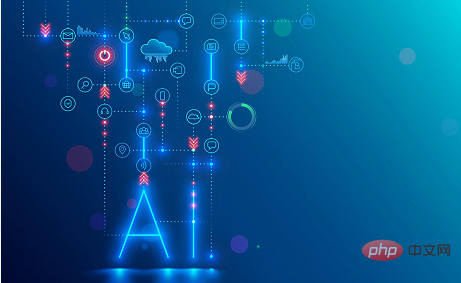人工智慧在農業中的作用:提高效率和永續性
人工智慧在精準農業中發揮著重要作用,並有助於提高農業實踐的可持續性。人工智慧具有自動化流程、提高準確性和減少對化學輸入的依賴的能力,有助於提高農業的效率和環境友善性。

人工智慧在提高農業效率和永續性方面的潛力正在被熱情地探索。隨著農業面臨氣候變遷、糧食需求增加和不斷變化的市場條件的挑戰,利用人工智慧來優化農業生產的能力是一個可喜的發展。
人工智慧技術可用於提高農業經營效率,從識別和管理病蟲害到優化作物生長和預測產量。人工智慧機器人和無人機可以檢查作物和土壤狀況,評估作物健康狀況,並就何時澆水、施肥和收割提供指導。這可以幫助農民節省時間,降低成本,並改善種植和收割的決策。
人工智慧還可以幫助優化水、肥料和能源等資源的利用,從而提高永續性。人工智慧應用可以監測和分析土壤濕度、溫度和光照水平等數據,以優化作物生產並減少浪費。此外,人工智慧驅動的精準農業可以優化水和肥料等投入的使用,有助於減少污染和改善水質。
人工智慧也可用於支援數據驅動的決策,並深入了解氣候變遷對農業生產的影響。人工智慧預測模型可以分析天氣預報和歷史作物產量的數據,以預測未來的作物產量,並確定成功收穫的最佳策略。
人工智慧提高農業效率和永續性的潛力是顯而易見的。透過利用人工智慧的力量,農民和農業生產者可以優化生產,減少浪費,同時提高農業經營的可持續性。透過對人工智慧技術和數據基礎設施的正確投資,農業可以從提高效率和永續性中受益。
利用人工智慧監測和管理農業害蟲防治
農業是全球經濟的重要組成部分,為世界提供糧食和其他資源。因此,重要的是要確保作物保持健康,免受病蟲害。為了幫助解決這個問題,農民和其他農業專業人員現在正轉向人工智慧來監測和管理田間害蟲防治。
人工智慧解決方案,如智慧害蟲偵測系統,正被用於監測作物的病蟲害跡象。這些系統可偵測環境的變化,如溫度、濕度和土壤養分,然後在出現問題時向農民發出警報。這使農民能夠迅速有效地採取行動,在害蟲造成重大破壞之前採取預防措施。
除了監測害蟲外,人工智慧也被用於管理田間害蟲防治。人工智慧機器正在開發中,使用有針對性的殺蟲劑來檢測和根除害蟲。這種方法被認為比地毯式噴灑更有效,可以幫助減少田間農藥的使用量。
最後,人工智慧正被用來提高農業害蟲控制的效率。支援人工智慧的機器人正在開發中,以執行各種任務,如偵察害蟲、收集數據和噴灑殺蟲劑。這減少了對人力的需求,為農民節省了時間和金錢。
人工智慧正在徹底改變農業害蟲防治的管理方式。透過監測作物病蟲害的跡象,更有效地管理病蟲害防治,並提高效率,人工智慧正在幫助農民保護作物並提高產量。
探索人工智慧如何幫助農民優化作物產量
近年來,人工智慧一直在改變農民實現作物產量優化的方式。透過利用尖端技術,農民現在可以利用即時洞察和數據驅動的決策,最大限度地提高產量。
人工智慧幫助農民優化作物產量的一種方式是使用自動駕駛汽車。自動駕駛汽車配備了感測器和攝像頭,可以收集有關環境的數據,包括土壤類型、濕度水平和其他可能影響作物生產的因素。這些數據可用於識別潛在問題,並為農民提供如何提高產量的及時建議。
人工智慧也被用於監測作物健康狀況,並就潛在的疾病或蟲害提供早期預警。透過使用電腦視覺和影像處理技術,人工智慧可以檢測出蟲害、營養缺乏和其他可能影響作物產量的問題的跡象。這些數據可以幫助農民就如何保護他們的作物做出明智的決定。
此外,人工智慧也被用來優化灌溉系統。人工智慧驅動的系統可以分析天氣數據和土壤濕度水平,以確定作物需要多少水才能保持健康和生產力。這些數據可用於自動化灌溉系統,並確保作物在正確的時間獲得正確的水量。
Finally, artificial intelligence is used to improve harvesting efficiency. By using computer vision and machine learning, AI can identify ripe crops and alert farmers when harvesting begins. This helps farmers maximize yields and reduce the time it takes to harvest.
As artificial intelligence continues to develop, farmers are likely to continue to benefit from its application in optimizing crop yields. The technology provides farmers with insights to help them make informed decisions and manage crops more efficiently, thereby increasing yields and profits.
Studying the use of robots in agriculture to reduce human labor
The use of robots in agriculture is growing rapidly, and for good reason. By reducing the need for human labor, this technology can help reduce costs and increase the efficiency of agricultural operations.
Robotics technology is already used in many areas, including precision agriculture, herd management and crop monitoring. In precision agriculture, robots can be used to accurately measure soil conditions and apply fertilizers and pesticides more efficiently. Herd management robots can help farmers track and monitor their herds, while crop monitoring robots can detect pests and other problems.
Robotics technology can also help reduce labor costs, as robots can be used to perform tasks such as planting, harvesting and sorting crops. This can reduce the need for manual labor, which can be expensive and time-consuming.
Robotics can also help improve food safety by automating the process of detecting and removing contaminants. This helps reduce the risk of foodborne illness and helps ensure food is safe to eat.
While there are many benefits to using robots in agriculture, there are also some potential drawbacks to consider. For example, robotics can be expensive to implement and, in some cases, its effectiveness may be limited. Additionally, robots are difficult to program and maintain, and can malfunction and cause damage.
Overall, the use of robots in agriculture has the potential to revolutionize the industry and reduce the need for human labor. However, further research is needed to ensure this technology is safe and effective.
Study the role of artificial intelligence in precision agriculture and promote sustainable agricultural practices
With the introduction of new technologies such as artificial intelligence, agriculture is developing rapidly. Artificial intelligence is revolutionizing the way farmers grow and manage crops, with the goal of improving environmental sustainability.
Through the use of precision agriculture, artificial intelligence is helping farmers reduce their reliance on chemical inputs and increase yields. Precision agriculture is a form of agriculture that uses information technology such as GPS and sensors to collect environmental data. This data can be used to make informed decisions about crop management, such as when to irrigate or fertilize.
Artificial intelligence is being used in precision agriculture to automate processes such as soil sampling and pest and disease detection. By automating these processes, AI can help farmers reduce labor costs and increase efficiency. Artificial intelligence is also used to process data collected from precision agriculture to create detailed maps of farms for optimized crop management.
Artificial intelligence is also used to improve the accuracy of weather forecasts. This can help farmers make better decisions about when to irrigate and when to harvest crops. With more accurate weather forecasts, farmers can minimize the risk of crop loss due to unexpected weather events.
Artificial intelligence is also being used to detect crop pests and diseases earlier. By accurately detecting pests and diseases, farmers can reduce the use of pesticides and fertilizers. This helps reduce environmental pollution and improve the sustainability of agricultural production.
Overall, artificial intelligence plays an important role in precision agriculture and helps make agricultural practices more sustainable. With its ability to automate processes, improve accuracy and reduce reliance on chemical inputs, AI can help make agriculture more efficient and environmentally friendly.
以上是人工智慧在農業中的作用:提高效率和永續性的詳細內容。更多資訊請關注PHP中文網其他相關文章!

熱AI工具

Undresser.AI Undress
人工智慧驅動的應用程序,用於創建逼真的裸體照片

AI Clothes Remover
用於從照片中去除衣服的線上人工智慧工具。

Undress AI Tool
免費脫衣圖片

Clothoff.io
AI脫衣器

AI Hentai Generator
免費產生 AI 無盡。

熱門文章

熱工具

記事本++7.3.1
好用且免費的程式碼編輯器

SublimeText3漢化版
中文版,非常好用

禪工作室 13.0.1
強大的PHP整合開發環境

Dreamweaver CS6
視覺化網頁開發工具

SublimeText3 Mac版
神級程式碼編輯軟體(SublimeText3)

熱門話題
 位元組跳動剪映推出 SVIP 超級會員:連續包年 499 元,提供多種 AI 功能
Jun 28, 2024 am 03:51 AM
位元組跳動剪映推出 SVIP 超級會員:連續包年 499 元,提供多種 AI 功能
Jun 28, 2024 am 03:51 AM
本站6月27日訊息,剪映是由位元組跳動旗下臉萌科技開發的一款影片剪輯軟體,依託於抖音平台且基本面向該平台用戶製作短影片內容,並相容於iOS、安卓、Windows 、MacOS等作業系統。剪映官方宣布會員體系升級,推出全新SVIP,包含多種AI黑科技,例如智慧翻譯、智慧劃重點、智慧包裝、數位人合成等。價格方面,剪映SVIP月費79元,年費599元(本站註:折合每月49.9元),連續包月則為59元每月,連續包年為499元每年(折合每月41.6元) 。此外,剪映官方也表示,為提升用戶體驗,向已訂閱了原版VIP
 使用Rag和Sem-Rag提供上下文增強AI編碼助手
Jun 10, 2024 am 11:08 AM
使用Rag和Sem-Rag提供上下文增強AI編碼助手
Jun 10, 2024 am 11:08 AM
透過將檢索增強生成和語意記憶納入AI編碼助手,提升開發人員的生產力、效率和準確性。譯自EnhancingAICodingAssistantswithContextUsingRAGandSEM-RAG,作者JanakiramMSV。雖然基本AI程式設計助理自然有幫助,但由於依賴對軟體語言和編寫軟體最常見模式的整體理解,因此常常無法提供最相關和正確的程式碼建議。這些編碼助手產生的代碼適合解決他們負責解決的問題,但通常不符合各個團隊的編碼標準、慣例和風格。這通常會導致需要修改或完善其建議,以便將程式碼接受到應
 微調真的能讓LLM學到新東西嗎:引入新知識可能讓模型產生更多的幻覺
Jun 11, 2024 pm 03:57 PM
微調真的能讓LLM學到新東西嗎:引入新知識可能讓模型產生更多的幻覺
Jun 11, 2024 pm 03:57 PM
大型語言模型(LLM)是在龐大的文字資料庫上訓練的,在那裡它們獲得了大量的實際知識。這些知識嵌入到它們的參數中,然後可以在需要時使用。這些模型的知識在訓練結束時被「具體化」。在預訓練結束時,模型實際上停止學習。對模型進行對齊或進行指令調優,讓模型學習如何充分利用這些知識,以及如何更自然地回應使用者的問題。但是有時模型知識是不夠的,儘管模型可以透過RAG存取外部內容,但透過微調使用模型適應新的領域被認為是有益的。這種微調是使用人工標註者或其他llm創建的輸入進行的,模型會遇到額外的實際知識並將其整合
 七個很酷的GenAI & LLM技術性面試問題
Jun 07, 2024 am 10:06 AM
七個很酷的GenAI & LLM技術性面試問題
Jun 07, 2024 am 10:06 AM
想了解更多AIGC的內容,請造訪:51CTOAI.x社群https://www.51cto.com/aigc/譯者|晶顏審校|重樓不同於網路上隨處可見的傳統問題庫,這些問題需要跳脫常規思維。大語言模型(LLM)在數據科學、生成式人工智慧(GenAI)和人工智慧領域越來越重要。這些複雜的演算法提升了人類的技能,並在許多產業中推動了效率和創新性的提升,成為企業保持競爭力的關鍵。 LLM的應用範圍非常廣泛,它可以用於自然語言處理、文字生成、語音辨識和推薦系統等領域。透過學習大量的數據,LLM能夠產生文本
 你所不知道的機器學習五大學派
Jun 05, 2024 pm 08:51 PM
你所不知道的機器學習五大學派
Jun 05, 2024 pm 08:51 PM
機器學習是人工智慧的重要分支,它賦予電腦從數據中學習的能力,並能夠在無需明確編程的情況下改進自身能力。機器學習在各個領域都有廣泛的應用,從影像辨識和自然語言處理到推薦系統和詐欺偵測,它正在改變我們的生活方式。機器學習領域存在著多種不同的方法和理論,其中最具影響力的五種方法被稱為「機器學習五大派」。這五大派分別為符號派、聯結派、進化派、貝葉斯派和類推學派。 1.符號學派符號學(Symbolism),又稱符號主義,強調利用符號進行邏輯推理和表達知識。該學派認為學習是一種逆向演繹的過程,透過現有的
 為大模型提供全新科學複雜問答基準與評估體系,UNSW、阿貢、芝加哥大學等多家機構共同推出SciQAG框架
Jul 25, 2024 am 06:42 AM
為大模型提供全新科學複雜問答基準與評估體系,UNSW、阿貢、芝加哥大學等多家機構共同推出SciQAG框架
Jul 25, 2024 am 06:42 AM
編輯|ScienceAI問答(QA)資料集在推動自然語言處理(NLP)研究中發揮著至關重要的作用。高品質QA資料集不僅可以用於微調模型,也可以有效評估大語言模型(LLM)的能力,尤其是針對科學知識的理解和推理能力。儘管目前已有許多科學QA數據集,涵蓋了醫學、化學、生物等領域,但這些數據集仍有一些不足之處。其一,資料形式較為單一,大多數為多項選擇題(multiple-choicequestions),它們易於進行評估,但限制了模型的答案選擇範圍,無法充分測試模型的科學問題解答能力。相比之下,開放式問答
 SOTA性能,廈大多模態蛋白質-配體親和力預測AI方法,首次結合分子表面訊息
Jul 17, 2024 pm 06:37 PM
SOTA性能,廈大多模態蛋白質-配體親和力預測AI方法,首次結合分子表面訊息
Jul 17, 2024 pm 06:37 PM
編輯|KX在藥物研發領域,準確有效地預測蛋白質與配體的結合親和力對於藥物篩選和優化至關重要。然而,目前的研究並沒有考慮到分子表面訊息在蛋白質-配體相互作用中的重要作用。基於此,來自廈門大學的研究人員提出了一種新穎的多模態特徵提取(MFE)框架,該框架首次結合了蛋白質表面、3D結構和序列的信息,並使用交叉注意機制進行不同模態之間的特徵對齊。實驗結果表明,該方法在預測蛋白質-配體結合親和力方面取得了最先進的性能。此外,消融研究證明了該框架內蛋白質表面資訊和多模態特徵對齊的有效性和必要性。相關研究以「S
 SK 海力士 8 月 6 日將展示 AI 相關新品:12 層 HBM3E、321-high NAND 等
Aug 01, 2024 pm 09:40 PM
SK 海力士 8 月 6 日將展示 AI 相關新品:12 層 HBM3E、321-high NAND 等
Aug 01, 2024 pm 09:40 PM
本站8月1日消息,SK海力士今天(8月1日)發布博文,宣布將出席8月6日至8日,在美國加州聖克拉拉舉行的全球半導體記憶體峰會FMS2024,展示諸多新一代產品。未來記憶體和儲存高峰會(FutureMemoryandStorage)簡介前身是主要面向NAND供應商的快閃記憶體高峰會(FlashMemorySummit),在人工智慧技術日益受到關注的背景下,今年重新命名為未來記憶體和儲存高峰會(FutureMemoryandStorage),以邀請DRAM和儲存供應商等更多參與者。新產品SK海力士去年在






